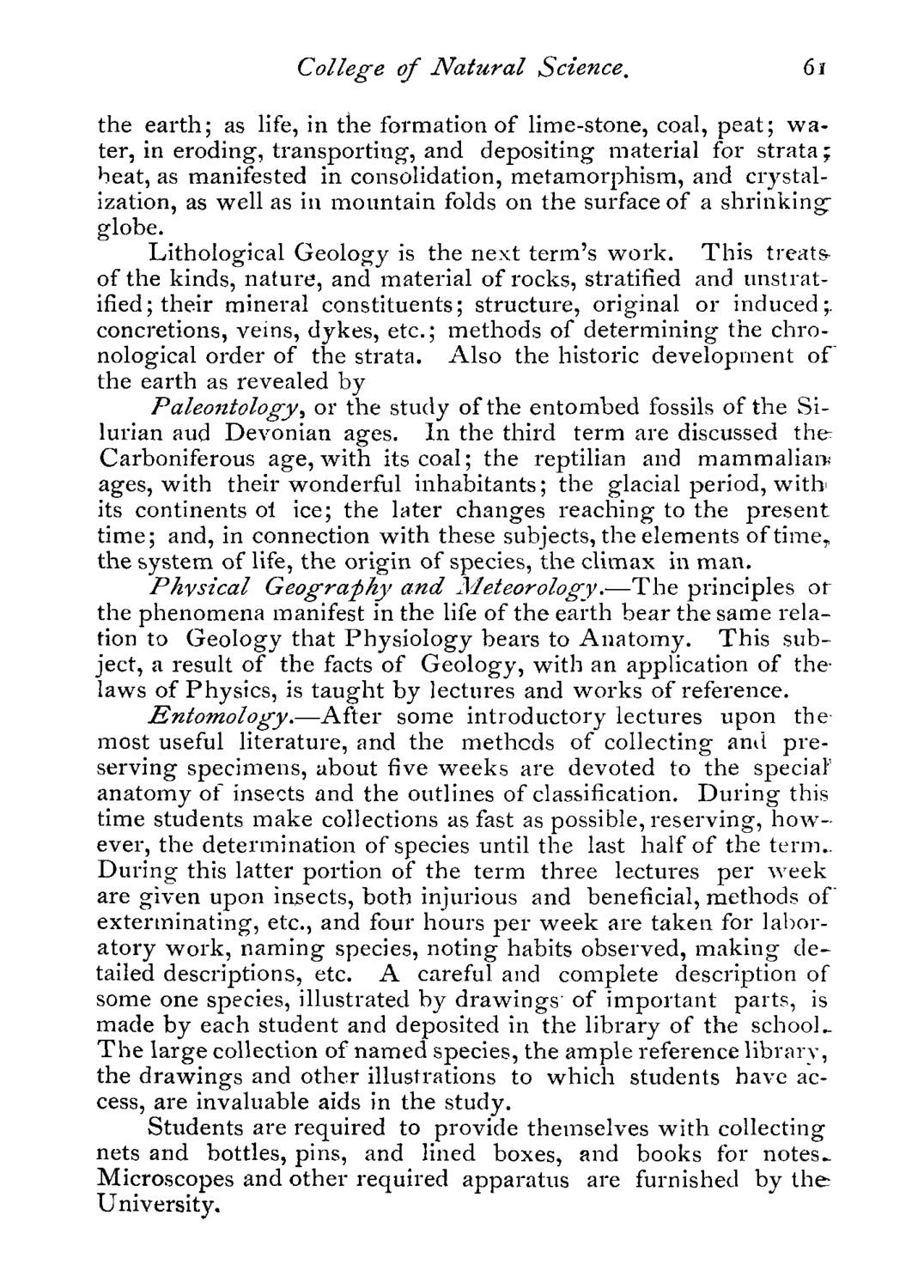| |
| |
Caption: Course Catalog - 1880-1881
This is a reduced-resolution page image for fast online browsing.

EXTRACTED TEXT FROM PAGE:
College of Natural Science, 61 the earth; as life, in the formation of lime-stone, coal, peat; water, in eroding, transporting, and depositing material for strata; heat, as manifested in consolidation, metamorphism, and crystalization, as well as in mountain folds on the surface of a shrinking; globe. Lithological Geology is the next term's work. This treats of the kinds, nature, and material of rocks, stratified and unstratified; their mineral constituents; structure, original or induced;, concretions, veins, dykes, etc.; methods of determining the chronological order of the strata. Also the historic development of the earth as revealed by Paleontology, or the study of the entombed fossils of the Silurian aud Devonian ages. In the third term are discussed the Carboniferous age, with its coal; the reptilian and mammalians ages, with their wonderful inhabitants; the glacial period, with' its continents ol ice; the later changes reaching to the present time; and, in connection with these subjects, the elements of time, the system of life, the origin of species, the climax in man. Physical Geography and Meteorology.—The principles or the phenomena manifest in the life of the earth bear the same relation to Geology that Physiology bears to Anatomy. This subject, a result of the facts of Geology, with an application of thelaws of Physics, is taught by lectures and works of reference. Entomology.—After some introductory lectures upon the most useful literature, and the methods of collecting and preserving specimens, about five weeks are devoted to the special' anatomy of insects and the outlines of classification. During this time students make collections as fast as possible, reserving, however, the determination of species until the last half of the term.. During this latter portion of the term three lectures per week are given upon insects, both injurious and beneficial, methods of" exterminating, etc., and four hours per week are taken for laboratory work, naming species, noting habits observed, making detailed descriptions, etc. A careful and complete description of some one species, illustrated by drawings' of important parts, is made by each student and deposited in the library of the schools The large collection of named species, the ample reference library, the drawings and other illustrations to which students have access, are invaluable aids in the study. Students are required to provide themselves with collecting nets and bottles, pins, and lined boxes, and books for notesMicroscopes and other required apparatus are furnished by the University.
| |